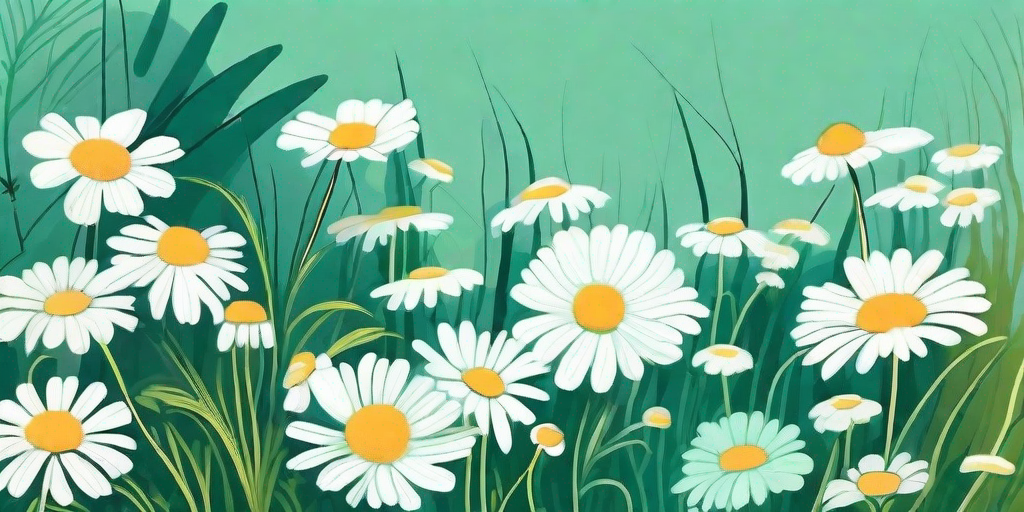
If you've ever dreamed of having a garden filled with the sweet scent and calming aura of chamomile, you're in the right place. We're about to embark on a journey of botanical exploration, and by the end, you'll be a chamomile-growing expert. So, put on your gardening gloves, grab a cup of chamomile tea (for inspiration, of course), and let's get started!
The Charm of Chamomile
Chamomile, a perennial herb known for its daisy-like flowers, is a garden favorite for many reasons. It's not just a pretty face; it's also a hardy plant that can withstand a variety of conditions. Plus, it's a fantastic pollinator, attracting bees and butterflies to your garden. And let's not forget its well-known calming properties, which have been used in herbal medicine for centuries.
There are two main types of chamomile: Roman and German. Roman chamomile, also known as Chamaemelum nobile, is a low-growing perennial that's perfect for ground cover. German chamomile, or Matricaria recutita, is an annual plant that can grow up to 2 feet tall. Both types have similar growing requirements, so don't worry about having to choose between the two. You can have your chamomile and grow it too!
Choosing the Perfect Zone
Like a diva choosing her dressing room, chamomile needs the right environment to truly shine. It prefers full sun but can tolerate partial shade. As for temperature, chamomile is a cool-season plant that thrives in USDA hardiness zones 3 through 9. So, whether you're in the frosty north or the sunny south, you can grow chamomile.
Chamomile isn't too picky about soil either. It prefers well-drained soil with a pH between 5.6 and 7.5. But don't worry if your garden doesn't meet these exact specifications. Chamomile is a forgiving plant that can adapt to a variety of soil conditions. Just avoid waterlogged soil, as this can lead to root rot.
Planting and Caring for Your Chamomile
Planting
Now that you've chosen the perfect spot, it's time to plant your chamomile. You can start chamomile from seeds, seedlings, or cuttings. If you're starting from seeds, sow them directly into the soil in late spring. Cover them lightly with soil, as they need light to germinate.
If you're using seedlings or cuttings, plant them in the soil, ensuring the root ball is level with the soil surface. Space your plants about 6 to 12 inches apart to give them room to spread out and grow.
Caring
Once your chamomile is planted, it's all about maintenance. Water your chamomile regularly, but be careful not to overwater. Remember, chamomile doesn't like soggy feet! As for fertilizing, chamomile isn't a heavy feeder, so a light application of a balanced fertilizer in the spring should be enough.
Pruning is also important to keep your chamomile healthy and productive. Regularly trim off dead or diseased parts of the plant to promote new growth. And don't forget to harvest the flowers regularly to encourage more blooms!
Common Problems and Solutions
Even the best gardeners face challenges, and growing chamomile is no exception. One common problem is aphids, tiny insects that suck the sap from your plants. If you notice your chamomile looking a bit under the weather, check for these little pests. You can get rid of them by spraying your plants with a mixture of water and mild soap.
Another issue is powdery mildew, a fungal disease that leaves a white, powdery substance on the leaves of your plants. To prevent this, make sure your chamomile has good air circulation and avoid overhead watering. If your plants do get infected, treat them with a fungicide.
FAQs
- Can I grow chamomile indoors?
Yes, you can! Chamomile can be grown in containers and makes a lovely indoor plant. Just make sure it gets plenty of sunlight.
- Can I use chamomile in my cooking?
Absolutely. Chamomile flowers can be used to make tea, and the leaves can be used in salads and other dishes. Just remember to wash them thoroughly before use.
- Is chamomile safe for pets?
While chamomile is generally safe for pets, some animals may have allergic reactions. It's always a good idea to check with your vet before introducing new plants into your pet's environment.
Conclusion
And there you have it, folks! The secret to growing chamomile in the perfect zone. With a little bit of knowledge and a dash of humor, you're well on your way to having a garden filled with the sweet scent and calming aura of chamomile. So, what are you waiting for? Get out there and start planting!
Remember, gardening is a journey, not a destination. So, enjoy the process, learn from your mistakes, and don't forget to stop and smell the chamomile!











